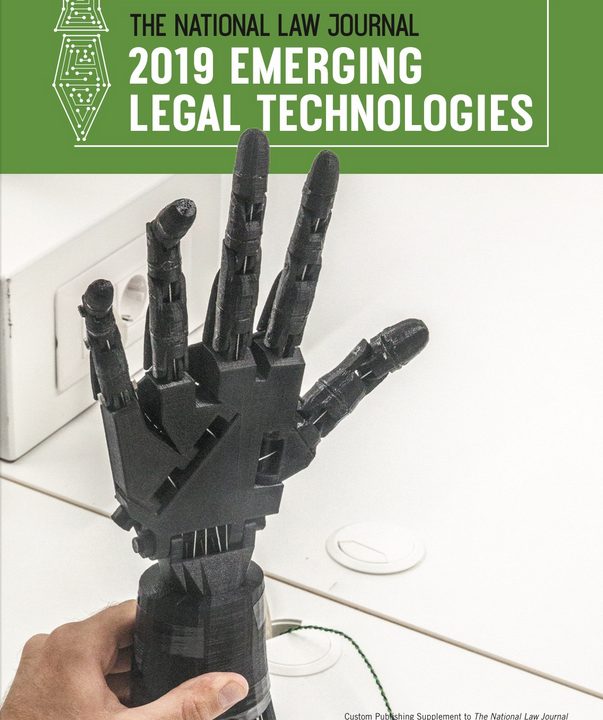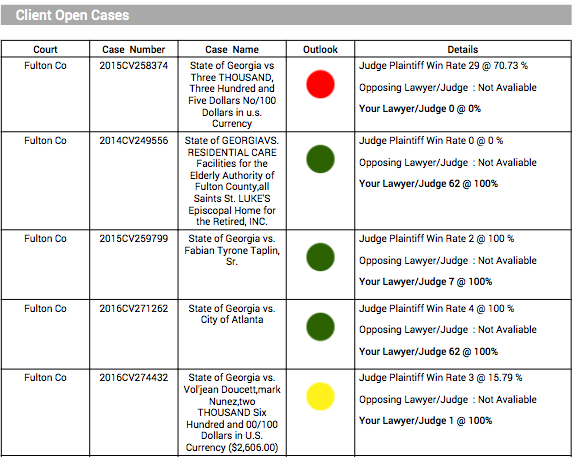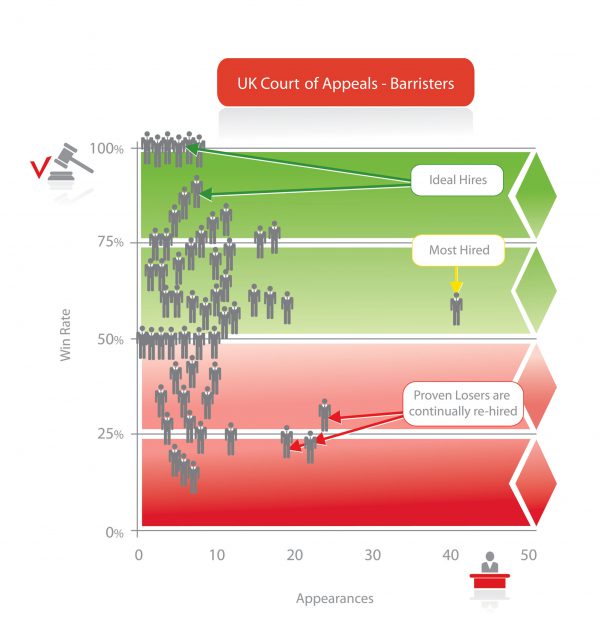JOBST ELSTER
Head of Content & Legal Market Strategy, InsideLegal
Big Data in Legal
Big Data in Legal


“For certain corporations and law firms on the technology edge, it’s already a differentiator. But but before too long, big data/predictive analytics will turn into an industry requirement.”
Jason Parkman
CEO, Mitratech

“First, there are still tremendous opportunities to use existing data resources more effciently— building better interfaces, search queries, search algorithms and results. There’s much innovation that can be applied to optimizing each of these steps.”
Charlotte Rushton
Managing Director, U.S.
Large Law Firms and Head of
Innovation, Thomson Reuters

Big Data in Legal | More flavors, more opportunities
I have always been a big fan of Baskin-Robbins ice cream — not just because the product is insanely delicious, but also because the ice cream franchise’s 31 Flavors tagline tells you exactly what to expect. Yes, choosing from 31 ice cream options is daunting, but somehow manageable. It never scared me away or made me feel like I was leaving so much amazing ice cream behind.
Although the link between big data advances in the legal space and ice cream might be a mighty stretch, there’s a parallel. When I first started investigating big data applications within law firms and corporate legal departments about five years ago, the flavor of the day was primarily “vanilla” — a one-note, safe choice of internal and external, structured and unstructured data exploration.
Fast forward to 2016 and big data in legal — now often referred to as (big) data analytics or predictive analytics — boasts many flavors, aka practical application areas. Some of these include new business development, e-discovery, compliance, contract analysis, case predictions and document automation. And, then there’s the link to machine learning, artificial intelligence (AI) and the internet of things. While I won’t be overwhelming you with the 31 flavors of legal big data here, I do want to point out some of the more “delicious” options.
The term big data is already on its way out, a casualty of a narrowing of the term, especially where the law firm data rubber meets the road. We already assume our data is big, complex, dark and unstructured. For the time being, it’s about predictive, advanced analytics in law and how this dovetails with AI, machine learning and predictive.
Jason Parkman, Chief Executive Officer (CEO) of Mitratech, a provider of legal, compliance and operational risk solutions, sees the nearing of a tipping point as it relates to leveraging the tremendous amounts of data at corporations’ and law firms’ disposal.
“For certain corporations and law firms on the technology edge, it’s already a differentiator. But before too long, big data/predictive analytics will turn into an industry requirement,” says Parkman. When asked about short-term opportunities for big data, in particular predictive analytics, Parkman cited four key areas: corporate legal spend management and reduction of legal spend; case outcomes and case predictions driven by corporate counsel; big data-driven staffing and HR strategies; and predictive risk analytics. “In terms of big data analytics-based decision-making, it will be less about the traditional running analytics versus contextual, real-time decision-making,” says Parkman.

WHO’S DOING WHAT: SAMPLING THE TASTIEST FLAVORS
Charlotte Rushton, Managing Director, U.S. Large Law Firms and Head of Innovation for Thomson Reuters, explains that analyzing data more effectively does not have to be rocket science. “First, there are still tremendous opportunities to use existing data resources more efficiently — building better interfaces, search queries, search algorithms and results. There’s much innovation that can be applied to optimizing each of these steps.”
According to Rushton, the enormous potential for big data analytics starts with the data rather than the questions. “How can we take vast amounts of unstructured data and use it to glean useful insights? It’s about understanding the relationship between data points and being able to generate insights that can identify trends, develop strategies, calculate probabilities and make accurate projections and other ways of finding practical applications for those insights,” she says.
As part of Rushton’s role as executive Innovation Champion for Thomson’s Legal business, her team often experiments with different applications for legal analytics, ranging from visualizations to predictive models.
“For example, with the 2015 Legal Tech Open Innovation Challenge, we worked with CodeX – the Stanford Center for Legal Informatics, to host an open competition for teams to create high-value analytics leveraging court docket data. In terms of outcomes, two of the winning submissions applied a regression technique to create predictive models for a specific motion (motion to dismiss) that could have a binary outcome. The submissions showed us that the data clustering and visualization aspects of analytics can be very powerful to generate insights,” says Rushton.
Another company, Premonition, helps organizations with lots of litigation find the best lawyers for specific cases. For Premonition CEO Toby Unwin, designing the Premonition big data system was very personal. “I had to deal with large amounts of litigation and realized I had no way to find out who the best attorneys were and how we would be able to measure how good they were,” says Unwin. To know how often a lawyer wins is an obvious question, but one that proved incredibly difficult to answer. Jaws dropped when we showed what we could find from existing court data.”
However, big data analytics applications like Unwin’s Premonition can be an acquired taste for lawyers. “While insurance companies love us — they’re all about big data, analytics and performance measurement — lawyers? Not so much. Initially, it was like asking cows what they thought about McDonalds,” says Unwin. “Slowly, now that they realize they can use this data to win account pitches and land new clients, they’re starting to come around. When it becomes common knowledge that firm brand is not a good measure of litigator quality, the market will shift emphasis onto picking lawyers individually by real world, data-based metrics.”
Melissa Kovacs, PhD, Principal of Data and Statistical Analysis firm FirstEval, knows that legal tops a list of industries that need big data — and need to understand it. “Law firms and attorneys are sitting on a gold mine of business intelligence data and past case data that can guide decision-making, boost case outcome successes, increase profitability and inform pricing structures, and more efficiently distribute their human capital.”
In a world increasingly driven by data, more employers are even using big data to make critical labor and employment decisions and reduce the risk of costly legal disputes. Against this backdrop, Littler has created its big data initiative spearheaded by Dr. Zev J. Eigen, the firm’s Global Director of Data Analytics. With a team of the firm’s attorneys at his disposal, Littler’s big data practice benchmarks and analyzes HR and litigation strategies on behalf of corporations.

AI: THE NEXT BIG DATA FLAVOR
Artificial intelligence, machine learning and big data go hand-in-hand. Machine learning, expert systems and other AI techniques enable lawyers to better process and mine data and information. Mining documents in discovery and due diligence, answering routine questions, sifting data to predict case outcomes, drafting contracts — all are faster, better, cheaper and becoming more so with the assistance of intelligent software.
Case in point: Am Law 100/Global 100-ranked firm Baker & Hostetler recently “hired” a robot lawyer, created by ROSS Intelligence, to be employed in the law firm’s bankruptcy practice. The AI assistant, built on IBM’s Watson big data technology, improves on legal research by providing only the most highly relevant answers rather than thousands, cutting down on the amount of information sifting. Additionally, it constantly monitors current litigation in order to notify users about recent court decisions that may affect specific cases. It also will continue to learn from experience, gaining more knowledge and operating more quickly, based on increasing interaction.
In conclusion, while big data in legal as we knew it a few years ago may be extinct, a new wave of predictive analytics techniques and applications is among us. It’s well positioned to provide law firm and corporate legal innovators with a limited competitive edge. Add AI and machine learning to the equation, and the data-driven decision-making future in legal is bright.
Click to download this article in PDF form. Big Data in Legal _ Legal Management 10/16/2016

ABOUT THE AUTHOR
Jobst Elster is InsideLegal’s Head of Content and Legal Market Strategy. He has served as a legal market strategist for the last 17 years, advising companies entering the legal market, involved in mergers and acquisitions, and expanding strategic operations overseas. Elster regularly writes and speaks on legal technology, market research and leveraging market data, technology innovations and futures, legal marketing and big data.
Twitter – @InsideLegal







